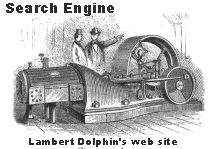
Entropy in the Old Creation

Entropy in the Old Creation
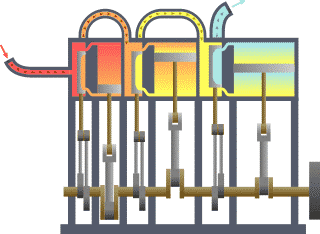
 |
|
"Time is the most mysterious of the four usual dimensions of our space-time continuum.
It's not so much that there's something strange about time,"
the thing that's strange is what's going on inside time.
We will first understand how simple the universe is when we recognize how strange time is."
Time, as a variable frequently appears in most of the mathematical equations used to describe known physical world. However, whether time flows backwards or forwards usually makes no difference in the mathematics. But in our everyday world we never see time flowing backwards--from the present into the past. The fact time is observed to flow inexorably only from past to present to future in real life is known as "time's arrow." In the known universe, entropy always increases.. You and I did not choose to be born, now when, nor did we preselect our birth parents. After being born, we soon discovered we that were destined to die. and we didn't know when. Time, as we know it inexorably proceeds from psst, through the present and toward the future. But time has more than one dimension. See It's About Time.
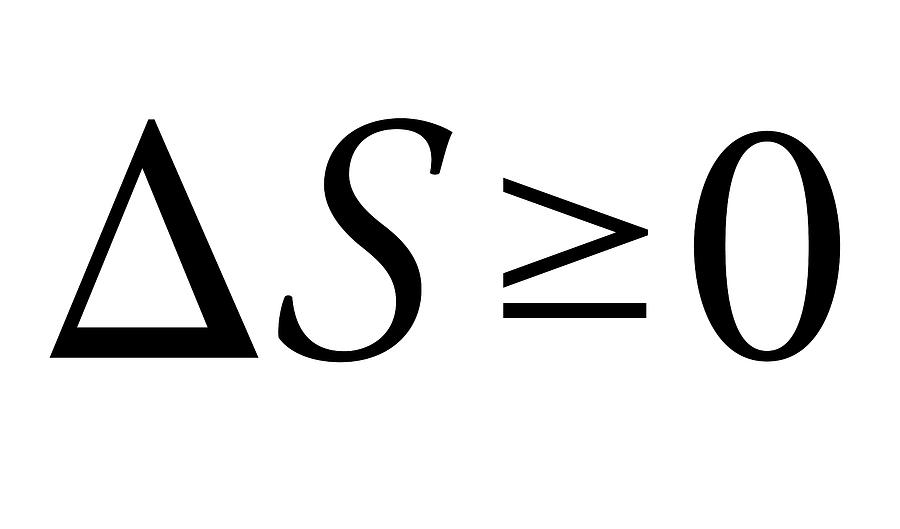


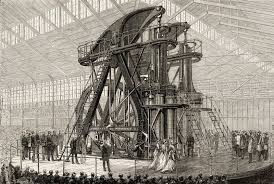
Biblical revelation adds to rather than detracts from our
knowledge of the physical universe, provided one takes the trouble
to search out hidden truths of scripture. The subject of discussion is the "Second Law of Thermodynamics." Here
science and the Bible are in close accord. This observed rule
of nature states that energy in the universe is becoming less
and less available as time moves forward towards the future. Stated
in another form the Second Law states that orderly systems tend---on
their own---to automatically become disorderly and chaotic. Processes
of decay and disintegration are an inherent, built-in characteristics
of the material world as we know it today.
While critics are quick to point out the Second Law applies to
what is known as closed systems, almost any discussion of the
applications of the Second Law can be considered by drawing a
sufficiently large boundary around the components being studied.
For instance, the earth by itself is not a closed system as far
as energy input is concerned, but the solar system is, for all
practical purposes, since little outside energy reaches the earth
except from the sun.
Many of us trained in science grow up trusting that the "laws
of physics" are immutable and trustworthy. Indeed, this is
the normal experience of the physical scientist or engineer. We
can confidently make many predictions based on theories that work
perfectly every time. If the laws of physics are broken or violated,
such things have escaped our notice thus far! It is true that
physical scientists usually suppose physics to be a more exact
science than biology. At least it seems easier to us to quantify
and measure the properties of the physical universe and to extrapolate
beyond the normal limits of the five senses when dealing with
non-living systems in comparison with the world of living organisms.
The Laws of Thermodynamics are discoveries, or observations, about
our physical world. They originated with the study of steam (heat)
engines in the 19th Century, originally in mathematical form. The First Law of Thermodynamics states that
energy and matter cannot be created or destroyed, but only converted
from one form to another. The Second Law describes the flow of
energy in the universe--which is always observed to be "downhill"---from
states of high availability to states of low availability. Both
observation and theory show that the universe is indeed running
down, like a clock spring gradually uncoiling as energy which is dissipated
by the escapement mechanism. Ordinarily this means that heat flows
from high temperature "reservoirs" to low temperature
"sinks." To reverse the process, (so that heat flows
uphill from a cold reservoir to a hotter reservoir), one must
put in additional external energy to "pump" heat from
the low temperature reservoir into the warmer one. This is how
refrigerators and air-conditioners work. They are heat pumps which
require extra energy to do their job. In a local region heat pumps
remove heat from a colder reservoir and transport it to a hotter
reservoir. This is done at less than 100% efficiency and the overall
"entropy" of the universe is increased. Other engines
utilize heated fluid from a high temperature source which does
useful work, delivering the exhaust fluid to a lower temperature
sink. Again the efficiency is always less than 100% and the overall
"entropy" of the universe increases.
As time goes by, a quantity known as the total entropy of every
system increases. Entropy is the physicist's term. It is a measure
of the state of energy unavailability of an energy-containing
system. According to the Second Law, the physical universe will
one day suffer a so-called "heat-death"---all the high
energy (hot) reservoirs will have poured their energy into the
colder parts of the cosmos, and everything everywhere will be
at a completely uniform temperature. In such a state it would
be impossible to build any more heat engines that could do useful
work, and the universe would "die" or grind to a halt.
(Although this discussion has centered on heat energy, the same
rules apply for electrical energy, magnetic energy, gravitational
energy, mechanical energy, and so forth).
 An equivalent way of stating the Second Law of Thermodynamics
has to do with order and complexity in the universe. Orderly systems
of molecules represent low entropy systems, and with the passage
of time the normal tendency of things is for such systems to become
disorderly, chaotic, and randomized.
An equivalent way of stating the Second Law of Thermodynamics
has to do with order and complexity in the universe. Orderly systems
of molecules represent low entropy systems, and with the passage
of time the normal tendency of things is for such systems to become
disorderly, chaotic, and randomized.
Crystals are not low entropy
systems in general because the lattice structure of crystals can
be easily specified by a simple instruction code. In contrast
genetic codes found in living cells are very low entropy structures
because they possess a very large amount of information. To bring
order out of chaos, we must put in outside energy and also programming
information. The instructions, blueprints, programming instructions
contained in the genetic codes of living cells are a perfect example.
The process of utilizing energy is always less than 100% efficient.
Energy is wasted every time we build and operate an engine or
a machine to do useful work. "Entropy always increases"
is an axiom of physics which has been found to always be true.
In the physical world we never see any significant natural examples
of energy flow from cold reservoirs to hot, and only rarely do
we observe any small (and very temporary), slightly-more-orderly
arrangements of molecules coming into existence because of random
statistical fluctuations. The physical universe as we know it
is characterized by rust, increasing ruin, and decay. Order comes out from chaos
only if someone makes it happen. Of course, man---being an intelligent
creature capable of organizing things---has built for himself
all sorts of heat pumps and engines and complex structures, constructing
orderly systems out of random parts. In doing so, however, extra
energy is required and the total entropy of the universe always
increases. The Second Law is not violated in any of these activities
undertaken by man.
The created universe most probably had its lowest entropy at the
end of the Sixth Day of creation. This should be the case because
God not only brought the raw material of the universe into existence
(these raw materials were space, time, matter and energy), He
then fashioned the universe from these "materials" according
to His own plan and design, lowering the entropy of everything
in the process, in a series of steps.
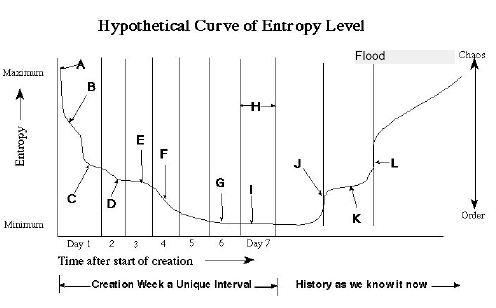
![]()

When one considers living things there appears at first glance
to be an exception to the Second Law of Thermodynamics. Living
cells are observed to build orderly systems out of simple molecules
assembled one by one according to inherited, self-contained genetic
(RNA/DNA) instructions. A single cell grows, divides, grows and
divides again, grows and differentiates and divides again, and
so on. Actually, living systems do not actually violate the Second
Law because all living things burn energy as fuel. The built-in
genetic codes that all living cells carry provide the intelligent
instructions for assembling orderly systems out of simple molecules.
Energy inputs from the physical universe are required to run biological
engines, therefore all living things live at the expense of raising
the total entropy of the physical universe. The intrinsic high
complexity of the genetic codes implies a Designing Intelligence
at the beginning of the universe. It was God who brought into
existence these original blueprints in the first place. The Second
Law disallows these codes having come into existence by accident.
Time plus chance always leads to chaos---not order! In fact, without
the intervention of outside intelligence complex systems do not
evolve out of simple systems, no matter how much energy is added
to a system.
No biologist can tell us how a living cell differs from a dead
one---except that the up building, growth process ceases, as does
repair, replacement of cells, and reproduction when death occur.
At death the once-orderly cell decays back into the elementary
molecules from which it was assembled. From Scripture we learn
that life is due to spiritual energy activating cells. For life
to exist, some form of energy supplied by God apparently flows
into our physical world from "outside the system" of
classical thermodynamics.
In the last century certain scientists attempted to weigh the human body immediately prior to death and then again afterwards to see if the spirit and soul have weight---however no weight loss at the moment of death was ever detected. Thus the difference between a dead cell and a living cell or a corpse and a living person is due to the absence or the presence of spiritual energy from God. In the Bible Jesus is called "the Author of Life" (Acts 3:15). This statement is yet another reminder that we can not expect to understand ourselves or our world if we ignore the spiritual dimension of life, and the information God has revealed to us in the Bible which is given for our enlightenment---and our salvation. Science does not know how to measure the interactions between the spiritual and the physical worlds, yet the Bible insists God is constantly interacting with His creation in "ways past finding out.""For God has made known to us in all wisdom and insight the mystery of his will, according to his purpose which he set forth in Christ as a plan for the fullness of time, to unite all things in him, things in heaven and things on earth. In him, according to the purpose of him who accomplishes all things according to the counsel of his will, we who first hoped in Christ have been destined and appointed to live for the praise of his glory. In him you also, who have heard the word of truth, the gospel of your salvation, and have believed in him, were sealed with the promised Holy Spirit, which is the guarantee of our inheritance until we acquire possession of it, to the praise of his glory...[may] the God of our Lord Jesus Christ, the Father of glory...give you a spirit of wisdom and of revelation in the knowledge of him, having the eyes of your hearts enlightened, that you may know what is the hope to which he has called you, what are the riches of his glorious inheritance in the saints, and what is the immeasurable greatness of his power in us who believe, according to the working of his great might which he accomplished in Christ when he raised him from the dead and made him sit at his right hand in the heavenly places, far above all rule and authority and power and dominion, and above every name that is named, not only in this age but also in that which is to come; and he has put all things under his feet..." (Ephesians 1:9-22)
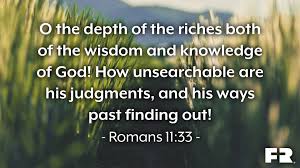 In the Bible life and light are often placed in close relationship
with one another; for example, in the Prologue of John's gospel:
"In him (the Word) was life, and the life was the light of
men." (John 1:4) Although this is a statement about spiritual
reality, as revealed in Scripture, there is little doubt that
the great Light, the Person Jesus Christ, is behind all forms
of ordinary light, and light in our physical world is always a
form of energy. Spiritual energy is actually the source of all
other forms of energy. Behind everything in our physical world
of shadows, stands the permanent, enduring reality of the spiritual.
Jesus is said to "uphold the universe by His mighty word
of power" (Hebrews 1:1-4). The Bible speaks also of the "mighty
power" God the Father exercised when He raised Jesus from
the dead and brought him into heaven forty days later. No meter
or instrument or scientific recorder could have been placed in
the tomb of Jesus to "detect" and "quantify"
that "mighty power." Yet, the power of God, who is the
Source of all life and energy, is much more important than the
flow of energy in kilowatts or joules or horsepower studied in
the everyday world of physics.
In the Bible life and light are often placed in close relationship
with one another; for example, in the Prologue of John's gospel:
"In him (the Word) was life, and the life was the light of
men." (John 1:4) Although this is a statement about spiritual
reality, as revealed in Scripture, there is little doubt that
the great Light, the Person Jesus Christ, is behind all forms
of ordinary light, and light in our physical world is always a
form of energy. Spiritual energy is actually the source of all
other forms of energy. Behind everything in our physical world
of shadows, stands the permanent, enduring reality of the spiritual.
Jesus is said to "uphold the universe by His mighty word
of power" (Hebrews 1:1-4). The Bible speaks also of the "mighty
power" God the Father exercised when He raised Jesus from
the dead and brought him into heaven forty days later. No meter
or instrument or scientific recorder could have been placed in
the tomb of Jesus to "detect" and "quantify"
that "mighty power." Yet, the power of God, who is the
Source of all life and energy, is much more important than the
flow of energy in kilowatts or joules or horsepower studied in
the everyday world of physics."...the creation waits with eager longing for the revealing of the sons of God; for the creation was subject to futility, not of its own will but by the will of him who subjected it in hope; because the creation itself will be set free from its bondage to decay and obtain the glorious liberty of the children of God. We know that the whole creation has been groaning in travail (labor-pangs) together until now, and not only the creation, but we ourselves, who have the first fruits of the Spirit, groan inwardly as we wait for adoption as sons, the redemption of our bodies."
This scripture tells us that the old universe, what the Bible
calls the "old creation," is fading away, dying and
decaying-that is, the universe became subject to the Second Law
of Thermodynamics at the time of the fall of the angels and of
man. The Bible does tell us that God's renewing work in our present
lives involves the soul and the spirit, however the physical body
is not made new until the resurrection. Although the Holy Spirit
gives life to our mortal flesh also, healing and sustaining our
physical bodies as we walk with God, the dying of the outer man,
the "old Adam" is only delayed, not reversed, when we
become believers, "So you also must consider yourselves dead
to sin and alive to God in Christ Jesus." (Romans 6:11) God
may not be actively supplying any new energy into the physical
universe, the Old Creation, but rather allowing it to run down
according to the Second Law. Thus we say that it is "natural"
for the universe to be running down, that is the way things are.
But the creation when completed on the Sixth Day (Gen. 1:31) was
not running according to the Second Law of Thermodynamics as we
now observe it to be.
There is also the difficult question of miracles. Many miracles
in the Bible are simply examples of God's speeding up natural
processes (turning water into wine, for instance). As Lord of
Creation, Jesus has the power to intervene in the old order of
things; but the question is, does He do so by putting new outside
energy into the system, or does he simply alter the arrangement
of the old order in a small way whenever he performs a genuine
miracle? Is His creative energy input directed mainly towards
the building of a "New Creation" instead? To consider
such issues adequately, one needs to explore a discussion such
as that given to us by C. S. Lewis in his book Miracles.
Lewis offers many helpful comments on these difficult matters.
Few writers, secular or religious, discuss the interlinking of
spiritual and material realms of creation and the existence of
any "laws" governing the two realms taken together instead
of separately. There are spiritual laws just as there are physical
laws, but none of us seems to know how to "measure"
the mighty power God manifests in nature or in human affairs.
Probably we really do not know if some "miracles" are
violations of the laws of thermodynamics as we know them, or whether
God only directs the present universe (the Old Creation) by working
within the bounds of the existing laws of physics. To "override"
gravity by spiritual means, it is not necessarily to "violate"
the laws of physics, yet it may well be that many genuine miracles
do represent God's intervention in the old order of things for
His own specific purposes. The several types of miracles demonstrated
by Jesus are discussed and analyzed by Ray C. Stedman in his book,
God's Loving Word:
Exploring the Gospel of John (1993).
 p
p  x > h
x > hwhere  x is the uncertainty
in the position of a particle in the x direction and
x is the uncertainty
in the position of a particle in the x direction and  p is the uncertainty in momentum,
p, (mass times velocity). Other pairs of variables besides p and
x may also be used. The two uncertainties are related to h, Planck's
constant. If the velocity of light has been decreasing since the
universe began, then Planck's constant has been increasing in
inverse proportion to c. In fact, the product hc seems to be a
true constant. (See Is the Velocity of
Light a Constant in Time?)
p is the uncertainty in momentum,
p, (mass times velocity). Other pairs of variables besides p and
x may also be used. The two uncertainties are related to h, Planck's
constant. If the velocity of light has been decreasing since the
universe began, then Planck's constant has been increasing in
inverse proportion to c. In fact, the product hc seems to be a
true constant. (See Is the Velocity of
Light a Constant in Time?)
Any decrease in the velocity of light since creation means that
h was a smaller number in the past than it is now. If h were smaller,
a number of atomic processes would be affected. Alpha particle
emission from heavy nuclei, for example, depends on "tunneling"
of the alpha particle under the curve of nuclear binding potential.
Such tunneling depends on "borrowing" extra energy
 E for a short time
E for a short time
 t, however subject
to
t, however subject
to  E
E  t > h. Thus alpha particle decay of atoms
could well have been more probable (and therefore more frequent)
in the past.
t > h. Thus alpha particle decay of atoms
could well have been more probable (and therefore more frequent)
in the past.
If h were zero, we could also say the universe was perfectly "determined"
and more "certain" or predictable than it is now. We
could then make perfectly precise measurements. In fact, with
h not equal to zero, the measurement process always disturbs the
system under study and makes precision determinations impossible.
Thus, if h were a smaller number in the past than it is today,
due to decreasing c, the universe would have been more orderly
in the past. We might say that this was due to "perfect coupling"
between the spiritual world, which is the source and the physical
world where we make measurements.
From a biblical point of view all events in the universe---whether
they appear to us to be random or orderly---are under God's full
control. The New Testament says that God, "works all things
according to the counsel of his own will." In a fallen world
God permits many things He does not desire, but He is still in
full control of all events---large and small.
The new science of Chaos has shown us that there is often a deeper
level of order in apparently random events. These new discoveries
have caused many to reconsider the possibility that there are
interrelationships in nature that escape our casual notice. The
issues of causality and determinism in nature have been frequently
debated during the history of science. In our time many of today's
scientists are seriously questioning Quantum theory and Einstein's
Relativity theory because of a belief in a deep underlying cause-and-effect
relationship between everything that goes on in the universe.
The Management of the Universe
Actually Scripture has a lot to say in relation about such matters as hidden variables and the laws of chance. Proverbs says, "The lot is cast into the lap, but the decision is wholly from the Lord." (Proverbs 16:33) This and similar passages show that the physical universe is not actually governed by random, statistical events. Rather, an Unseen Hand---working behind the scenes is directing the affairs of men, nations, nature. In the Sermon on the Mount Jesus assures the multitude that the hairs of our heads are numbered, that God clothes the fields with grass and feeds the birds of the air. Furthermore, although we search diligently to find out how God does things, we cannot know the answers to that question:"O the depth of the riches and wisdom and knowledge of God! How unsearchable are his judgments and inscrutable his ways! 'For who has known the mind of the Lord, or who has been his counselor?' 'Or who has given a gift to him that he might be repaid?' For from him and through him and to him are all things. To him be glory forever. Amen." (Romans 11: 33-36)
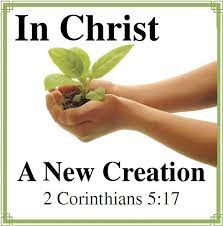 The 102nd Psalm also gives us further help in understanding
the present state of the created order of things,
The 102nd Psalm also gives us further help in understanding
the present state of the created order of things,
"Of old thou didst lay the foundations of the earth, and the heavens are the work of thy hands. They will perish, but thou dost endure; they will all wear out like a garment. Thou changest them like raiment, and they pass away; but thou art the same, and thy years have no end." (Psalm 102:25-27)
What seems clear is that both the Bible and the Second Law
describe the known universe (that is, the "old creation")
as decaying, "wearing out," and coming to an end. If
God is intervening from time to time in the universe as we know
it, His present interventions are apparently limited to slowing
down or temporarily arresting the overall process of decay of
our physical world, not reversing it. The Bible teaches that God
has full control over all circumstances in life, such as hurricanes,
earthquakes, airplane crashes, and the activity of the stock market.
In fact, He has not abdicated his sovereignty in any way, He "...accomplishes
all things according to the counsel of his (own) will." (Ephesians
1:11) How He does this while still allowing man free will, how
he takes into account all the thoughts and actions of several
billion people including those yet unborn, is utterly amazing,
of course.
Unfortunately, in spite of God's grace and mercy, man is increasingly
suffering the disastrous consequences of his own bad moral choices.
As has been often said, man does not violate the law of gravity
by leaping off of a tall building; he merely illustrates it. It
is perfectly obvious in the moral, social sphere that life on
earth is not getting better and better, but worse and worse as
history moves along! This disintegration and decay extends into
our understanding of science, philosophy, history, art, and other
areas of human endeavor as well.
 The old creation as constructed by God over the six days of creation
week culminated in the creation of man as the highest of God's
creatures, a creature who bears the very image and likeness of
his Creator. The new creation leads down from Christ. The idea
of an old created order of things (described in the Bible) is
set in juxtaposition with the concept of a new creation now being
quietly constructed as a home for God's new humanity: "Therefore,
if any one is in Christ, he is a new creation; the old has passed
away, behold, the new has come." (2 Corinthians 5:17). All
of us are born into the world as descendants of the First Adam,
who is fallen. We carry Adam's genes and we have inherited original
sin from Adam, therefore we sin and we are subject to death. When
we place our faith in Jesus we are transferred out of the First
Adam and immediately become the sons and daughters of the Second
Adam, Jesus. When this happens we are born into God's family by
spiritual rebirth (John 3), and we are also adopted as adult sons
in his household (Galatians 3:23-4:7). God's work in building a new
creation begins in the human spirit, but ends in the unveiling
of a great city, the New Jerusalem, and ultimately a "new
heavens and new earth."
The old creation as constructed by God over the six days of creation
week culminated in the creation of man as the highest of God's
creatures, a creature who bears the very image and likeness of
his Creator. The new creation leads down from Christ. The idea
of an old created order of things (described in the Bible) is
set in juxtaposition with the concept of a new creation now being
quietly constructed as a home for God's new humanity: "Therefore,
if any one is in Christ, he is a new creation; the old has passed
away, behold, the new has come." (2 Corinthians 5:17). All
of us are born into the world as descendants of the First Adam,
who is fallen. We carry Adam's genes and we have inherited original
sin from Adam, therefore we sin and we are subject to death. When
we place our faith in Jesus we are transferred out of the First
Adam and immediately become the sons and daughters of the Second
Adam, Jesus. When this happens we are born into God's family by
spiritual rebirth (John 3), and we are also adopted as adult sons
in his household (Galatians 3:23-4:7). God's work in building a new
creation begins in the human spirit, but ends in the unveiling
of a great city, the New Jerusalem, and ultimately a "new
heavens and new earth.""But in fact Christ has been raised from the dead, the first fruits of those who have fallen asleep. For as by a man (Adam) came death, by a man (Jesus) has come also the resurrection of the dead. For as (those who are) in Adam all die, so also (those who are) in Christ shall all be made alive. But each in his own order: Christ the first fruits, then at his coming those who belong to Christ. Then comes the end, when he delivers the kingdom to God the Father after destroying every rule and every authority and power. For he must reign until he puts all his enemies under his feet. The last enemy to be destroyed is death. 'For God has put all things in subjection under his feet (Psalm 8:6)' But when it says, 'All things are put in subjection under him,' it is plain that he is excepted who put all things under him. When all things are subjected to him, then the Son himself will also be subjected to him who put all things under him, that God (the Father) may be everything to everyone." (1 Corinthians 15:20-18)
This passage gives the additional insight that the "new
creation" is not totally separate and distinct from the old
since Jesus is reigning now over the old creation and will renew
it fully when He has destroyed out of it all his enemies. Furthermore,
life in the new creation is born out of seeds sown into the soil
of the old creation, figuratively speaking. The reference to "first
fruits" clearly relates to the sheaf of grain offered by
the Jews at the Feast of Unleavened Bread following the Passover,
the very day on which Jesus was raised from the dead to become
the Pioneer and Firstborn of the new creation.
In many separate revelations [each of which set forth a portion of the Truth] and in different ways God spoke of old to [our] forefathers in and by the prophets, [But] in the last of these days He has spoken to us in [the person of a] Son, Whom He appointed Heir and lawful Owner of all things, also by and through Whom He created the worlds and the reaches of space and the ages of time [He made, produced, built, operated, and arranged them in order]. He is the sole expression of the glory of God [the Light-being, the out-raying or radiance of the divine], and He is the perfect imprint and very image of [God's] nature, upholding and maintaining and guiding and propelling the universe by His mighty word of power. When He had by offering Himself accomplished our cleansing of sins and riddance of guilt, He sat down at the right hand of the divine Majesty on high, [Taking a place and rank by which] He Himself became as much superior to angels as the glorious Name (title) which He has inherited is different from and more excellent than theirs. (Hebrews 1:2-4, Amplified Bible).
Again, the fact that Jesus is presently sustaining the universe
from the realm of the spiritual raises the question whether there
are inputs of spiritual energy into our physical world which ultimately
show up as energy added "from the outside" of our physical
world considered as a closed system. (See What
Holds the Universe Together?). It may be God sustains, directs,
and propels the universe by operating only within the framework
of the existing and known laws of physics we observe today. What
I think it is safe to claim for science is that no known violations
of the Second Law have been detected (and verified) thus far by
man. We have yet to learn whether miracles involve entropy changes
introduced from outside the known (physical) universe, or whether
UFO's are explainable entirely by presently understood rules of
physics, and so on. It is difficult for science to study rare
or one-of-a-kind events, and such things tend to be relegated
by default to the less reputable field of pseudoscience.
"For it was not to angels that God subjected the world to come, of which we are speaking."
Ray Stedman comments on this verse as follows:
Still thinking of the supremacy of the Son over angels, our author, in 2:5-9, approaches the theme from a different view. In chapter 1 the deity of Jesus was primarily in the foreground; in chapter 2 his perfect humanity means that he is the superior of every angelic being. Verse 5 carries forward the subject of verse 4, It is not to angels that he [God] has subjected the world to come, about which we are speaking.
Some fascinating themes are introduced by this observation. It raises immediately the question, What is meant by the world to come? It can mean (1) life after death, (2) the future kingdom of Christ on earth (the millennium) or (3) the new heavens and the new earth. Since almost nothing is said in Hebrews about life after death (9:27), (1) can be dismissed without further development for it is obviously not what he refers to in the phrase about which we are speaking. That limiting phrase probably looks back to 1:11-12 which emphasizes the changes which the material creation will experience. Paul, in Ephesians 2:7, speaks of "coming ages," indicating that at least two more ages lie ahead. The two which Scripture continually name are the restored Davidic kingdom (the millennium) and the new heavens and the new earth. In several places Scripture describes the new heavens and earth as lasting forever, intimating it would be the last age yet to come. But the word world (Gk: oikoumene) in 2:5 refers not to the cosmos, but to the inhabited earth, and this would strongly suggest the writer has in mind (2), the kingdom of Christ on earth. Hughes calls the world to come, "the age of the Messiah in which the messianic promises and prophecies of old find their fulfillment" (1977:82). It is surely to this that Jesus refers in Matthew 19:28, "Truly, I say to you, in the new world [palingenesia, 'restoration'], when the Son of man shall sit on his glorious throne, you who have followed me will also sit on twelve thrones, judging the twelve tribes of Israel" (RSV). Several passages in Hebrews (6:5 and 12:22-24) suggest that this kingdom is in some sense already available to those who live by faith. Perhaps, we should see this new age to come as spiritually arrived, yet physically still to come.
A reference to the new heavens and new earth seems unlikely in view of the mention of judgment in Matthew 19:28, for sin will have no place in the new creation. Also Israel will not play a distinctive role among the nations, for then "the kingdoms of this world are become the kingdoms of our Lord, and of his Christ; and he shall reign for ever and ever" (Revelation 11:15 KJV).
If, as the writer claims, the world to come has not been subjected to angels, it raises the possibility that the present age is subject to angelic governance. F. F. Bruce supports this view, citing the LXX rendering of Deuteronomy 32:8:When the Most High gave to the nations their inheritance
When he separated the children of men,
He set the bounds of the peoples
According to the number of the angels of God.He further quotes Daniel 10:20, which names angelic beings as "the prince of Persia" and "the prince of Greece," and Daniel 10:21 and 12:1 speak of Michael as "the great prince" who champions the people of Israel (1964:33). This concept would explain why the fallen angel called Satan is referred to as "the god of this world" and is permitted his control until the Lord returns and the new age begins and the curse is lifted from nature. Then, too, the devil will be bound and cast into a bottomless pit for a thousand years (Rev 20:2-3).
This background serves to give special meaning to the quotation from Psalm 8 which the writer of Hebrews now invokes. His vague reference to his source (Gk: "Someone somewhere has testified") is not due to uncertainty but to a desire to stress Scripture as speaking, not a mere human author (Bruce, Kistemaker and Hughes). David's psalm is a wondering reaction to the majesty of the night sky as it reveals the power and wisdom of God and forces the question, What part do puny human beings play in such a universe? The answer is that we were made a little lower than the angels, but then crowned with glory and honor, and everything has been put under our feet. This is a direct reference to Genesis 1:26:Then God said, "Let us make man in our image, in our likeness, and let them rule over the fish of the sea and the birds of the air, over the livestock, over all the earth, and over all the creatures that move along the ground."
Here is glory and honor (made in the image and likeness of God) and authority and power (ruling over all the earth). Some commentators take the made a little lower than the angels in a temporal sense, "made for a little while," to imply that human existence in this space-time continuum is only for a brief lifetime, and then we are freed to live the life of eternity. Whichever way the phrase is read, it is clear that our intended destiny was one of power and authority over all the conditions and life of earth. If this was our commission from the moment of creation, what light it sheds on our responsibility to care for this planet and its creatures! We were not given dominion so the earth and the animals should serve us; rather, we are given authority to develop them to the fullest extent intended by the fruitful mind of the Creator. We are to serve them by thorough knowledge and loving care, in the form of servant-leadership which the Lord himself manifested when he came.
Yet, says this writer in what must be the understatement of the ages, we do not see everything subject to him. No, there are many things fallen humans cannot control: the weather, the seasons, the instincts of animals, the tides, our own passions, international events, natural disasters, and on and on. The increasing pollution of the planet, the spread of famines and wars, the toll taken by drugs, accidents and disease, all tell the story of a lost destiny.
But almost with a shout the author cries, But we see Jesus! He is the last hope of a dying race. And that hope lies both in his deity and his humanity. He alone, as a human being, managed to fulfill what was intended for us from the beginning. When we read the Gospels, we are forced to ask, Who is this man who stills the winds and the waves with a single word; who multiplies food at will; who walks on the waves; who summons fish to bring up coins at his command; who dismisses disease with a touch; and calls the dead back to life? Who is he? He is the Last Adam, living and acting as God intended us to act when he made us in the beginning. It was the First Adam who plunged the race into bondage and limitation; it is the Last who sets us free in soul and spirit, so that we may now learn how to live in the ages to come when the resurrection gives us back a body fit for the conditions of that life.
The writer traces in terse phrases the steps Jesus took to solve forever the problem of human sin. (1) He was made a little lower than the angels. There is the whole wonder of the Incarnation; in John's phrasing, "the Word became flesh and lived for a while among us." Then (2) because he suffered death, he was (3) crowned with glory and honor and thus he achieved as a human being the position intended for us in the beginning: the being who was to be closest to God, higher than any angel, and in authority over all things! Then, lest we should forget the cost, the writer adds (4) so that by the grace of God he might taste death for everyone. To taste death does not simply mean to die, but to experience death in its full horror and humiliation. He comes under the penalty of sin in order that he might remove it. The emphasis here is that what Jesus did through his death and exaltation was for everyone. Salvation is now open to all; no one who comes to Jesus will ever be refused. His death was for everyone in the sense that everyone was thereby rendered savable.
Ever since the death of Jesus the way to glory has always Included a death which leads to life. Some forms of media-evangelism have presented the Christian life as the way to fulfillment of great possibilities without also making clear that it includes a death to self-indulgence and learning obedience. We dare not extol the incredible benefits of the Christian life without reminding ourselves that they will also lead us to a cross.
To whom, then, is the world to come subject? Not to angels, that is clear. It is to be subject to the human race---to the human race as God intended us to be, redeemed and restored through sharing the life of the Man in glory, seated at the right hand of God. This is the theme of verses 10-13. (Commentary on Hebrews, IVP)
"And you he made alive, when you were dead through the trespasses and sins in which you once walked, following the course of this world, following the prince of the power of the air, the spirit that is now at work in the sons of disobedience. Among these we all once lived in the passions of our flesh, following the desires of body and mind, and so we were by nature children of wrath, like the rest of mankind. But God, who is rich in mercy, out of the great love with which he loved us, even when we were dead through our trespasses, made us alive together with Christ (by grace you have been saved), and raised us up with him, and made us sit with him in the heavenly places in Christ Jesus, that in the coming ages he might show the immeasurable riches of his grace in kindness towards us in Christ Jesus. For by grace you have been saved through faith; and this is not your own doing, it is the gift of God---not because of works, lest any man should boast. For we are his workmanship, created in Christ Jesus for good works, which God has prepared beforehand, that we should walk in them." (Ephesians 2:1-10)
Whatever power and right man originally had been given to exercise
control over creation was largely lost at the fall. Only a partial
restoration occurred when God called Adam and Eve back to Himself
and made new provisions for their lives and for the creation.
In giving their lives to the Evil One, our first parents abdicated,
as it were, the title deed of the earth. At the fall, the alien,
destructive power of Satan began to take control of man, devastating
both people and nature. One of the aspects of Christ's work on
the Cross was to ransom mankind and buy back from Satan any claims
he may have had to dominion, territory or power in the universe.
God's sovereign control over all creation-all the angels and all
men-has, of course, never been diminished in the slightest or
threatened by the presence of evil in the universe or by "plots
against the throne." (I believe in the doctrine of "unlimited
atonement" which states that Christ died for the sins of
all mankind, not just for the sins of those who accept him as
Lord of their lives. However, I am not a universalist. Universalists
believe that all men will ultimately be saved and none lost).
That our Creator originally intended man to have the central place
in creation is clearly states by the writer of the letter to the
Hebrews:
"For it was not to angels that God subjected the world to come, of which we are speaking. It has been testified somewhere, 'What is man that thou art mindful of him, or the son of man, that thou carest for him? Thou didst make him (man) for a little while lower than the angels, thou hast crowned him with glory and honor, putting everything in subjection under his feet.' Now in putting everything in subjection to him, he left nothing outside his control. As it is, we do not yet see everything in subjection to him.
"But we see Jesus, who for a little while was made lower than the angels, crowned with glory and honor because of his suffering of death, so that by the grace of God he might taste death for every one. For it was fitting that he, for whom and by whom all things exist, in bringing many sons to glory, should make the pioneer of their salvation perfect through suffering. Since therefore the children share in flesh and blood, he himself likewise partook of the same nature, that through death he might destroy him who has the power of death, that is the devil, and deliver all those who through fear of death were subject to lifelong bondage." (Hebrews 2:5-10; 14-15)
"But the day of the Lord will come like a thief, and then the heavens will pass away with a loud noise, and the elements will be dissolved (unloosed) with fire, and the earth and the works that are upon it will be burned up." (2 Peter 3:10)
This passage suggests that the active power of God is responsible for such things as the nuclear binding energy, the "strong force," in every atom---without which the atomic nucleus would fly apart. The popular gospel chorus which assures us that "He's got the whole, wide world in His hands" is perfectly correct theologically. Scripture assures us (if I may reiterate) that volcanoes do not erupt, tornadoes do not wreak their havoc, and sparrows do not fall to the ground outside of God's control-regardless of the intermediate mechanisms by which He regulates these activities and happenings of the physical world. Though it may appear so to us, there are really no accidents in a universe where a living God pays perfect attention to every detail and loses sight of nothing:
"O LORD, how manifold are thy works! In wisdom hast thou made them all; the earth is full of thy creatures. Yonder is the sea, great and wide, which teems with things innumerable, living things both small and great. There go the ships, and Leviathan which thou didst form to sport in it. These all look to thee, to give them their food in due season. When thou givest to them, they gather it up; when thou openest thy hand, they are filled with good things. When thou hidest thy face, they are dismayed; when thou takest away their breath, they die and return to their dust. When thou sendest forth thy Spirit, they are created; and thou renewest the face of the ground." (Psalm 104:24-30).
A clear distinction is made in Holy Writ between the Creator
and the created thing. By contrast, pantheistic religious views
such as Hinduism, hold that the sum total of all things is God.
The God of the Bible stands apart from His creation. But He is
also actively involved in the sustenance of his creatures and
the establishment of an invisible kingdom which is quietly being
prepared for public unveiling at the end of our age.
"But some one will ask, 'How are the dead raised? With what kind of body do they come?' You foolish man! What you sow does not come to life unless it dies. And what you sow is not the body which is to be, but a bare kernel, perhaps of wheat or of some other grain. But God gives it a body as he has chosen, and to each kind of seed its own body. For not all flesh is alike, but there is one kind for men, another for animals, another for birds, and another for fish. There are celestial bodies and there are terrestrial bodies; but the glory of the celestial is one, and the glory of the terrestrial is another. There is one glory of the sun, and another glory of the moon, and another glory of the stars; for star differs from star in glory.
"So it is with the resurrection of the dead. What is sown is perishable, what is raised is imperishable. It is sown in dishonor, it is raised in glory. It is sown in weakness, it is raised in power. It is sown a physical body, it is raised a spiritual body. If there is a physical body, there is also a spiritual body. Thus it is written, 'The first man Adam become a living being'; the last Adam became a life-giving spirit.
"But it is not the spiritual which is first but the physical, and then the spiritual. The first man was from the earth, a man of dust; the second man is from heaven. As was the man of dust, so are those who are of dust; and as is the man of heaven, so are those who are of heaven. Just as we have borne the image of the man of dust, we shall also bear the image of the man of heaven. I tell you this, brethren: flesh and blood cannot inherit the kingdom of God, nor does the perishable inherit the imperishable. Lo! I tell you a mystery. We shall not all sleep, but we shall all be changed, in a moment, in the twinkling of an eye, at the last trumpet. For the trumpet shall sound, and the dead will be raised imperishable, and we shall be changed. For this perishable nature must put on the imperishable, and this mortal nature must put on immortality. When the perishable puts on the imperishable, and the mortal puts on immortality, then shall come to pass the saying that is written: 'Death is swallowed up in victory.' 'O death, where is thy victory? O death, where is thy sting?'" (1 Corinthians 15:35-55)
In this passage we see evidence that the universe is more open-ended
than we might otherwise suppose. There are several "levels"
to creation, and not all living beings are "creatures made
of dust" as we are. The angels are made entirely of spirit
for instance, as far as I know. To move into the new creation,
one must die. The body is planted like a seed, but the new life
which springs forth is altogether different from the seed, though
derived from the seed. God allows us to die, as he allows the
old creation to "run down," but he then brings forth
a new kind of body to clothe the redeemed of earth (those previously
made new in their souls and spirits). Accompanying the resurrection
is a renewal of creation and a releasing of nature from its bondage
to decay. Second Corinthians 5:1-5 indicates the new resurrection
bodies are already in existence waiting to be stepped into on
the day of resurrection, or at the hour of one's death.
Jesus told his disciples He was going to prepare a place for them
to live, which is now already in existence. Hebrews, Chapter 12,
describes believers coming to New Jerusalem, which is the heavenly
city now ready, and Revelation 21 describes that city in detail,
like an orbiting space station of awesome beauty made of rare
and costly materials prepared as a dwelling place for the new
mankind.
"For behold, I create new heavens and a new earth; and the former things shall not be remembered or come into mind. But be glad and rejoice for ever in that which I create; for behold, I create Jerusalem a rejoicing, and her people a joy. I will rejoice in Jerusalem, and be glad in my people; no more shall be heard in it the sound of weeping and the cry of distress. No more shall there be in it an infant that lives but a few days, or an old man who does not fill out his days, for the child shall die a hundred years old, and the sinner a hundred years old shall be accursed.
"They shall build houses and inhabit them; they shall plant their vineyards and eat their fruit. They shall not build and another inhabit; they shall not plant and another eat; for like the days of a tree shall the days of my people be, and my chosen shall long enjoy the work of their hands.
"They shall not labor in vain, or bear children for calamity; for they shall be the offspring of the blessed of the LORD, and their children with them. Before they call I will answer, while they are yet speaking I will hear. The wolf and the lamb shall feed together, the lion shall eat straw like the ox; and dust shall be the serpent's food. They shall not hurt or destroy in all my holy mountain, says the LORD." (Isaiah 65:17-25)
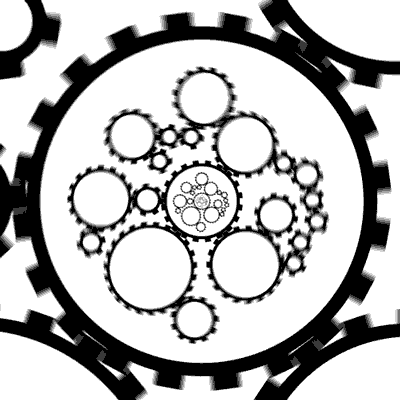
Original Notes from 1996:
1. With regard to what we commonly call the formation of "rust," i.e., formation of iron oxides, Larry Henling (lmh@xray.caltech.edu) comments, "For what it is worth, the process of rusting (iron plus air plus water to hydrous iron oxides) actually leads to a product, rust, which has less entropy than the reactants, not more." (12/18/96) Henling raises a good point.
David Cavanaugh (dcavanau@ro.com) adds the following elaboration: "There are chemical and physical changes which are driven by a Thermodynamical system assuming a minimum energy state, which represent a loss of Entropy for the system because the system has lost statistical degrees of freedom due to the loss of possible energy states in the system. If the surroundings to which the particular Thermodynamical system inhabits are tightly coupled from an energy or mass transfer point of view, one might conceptually define a larger inhomogeneous Thermodynamical system for which the Entropy increase will be greater than or equal to the Entropy loss of the sub-system undergoing the physical/chemical change - this being the Second law statement."
To fully appreciate Larry Helling's criticism, one must look at this issue from the point of view of the Third law and Third law Entropies. These Entropies are calculated by integrating the heat capacity (a function of temperature) of a substance (at constant pressure) times the differential of temperature divided by temperature from absolute zero to the ambient temperature. By Boltzmann's law the Entropy of a perfect crystal at absolute zero is zero because there is only one system energy state. The Second law definition of the change of Entropy (dS = d / T) for a reversible process (which temperature is) is extended via the definition of heat capacity (Cp = d / d) for the purposes of the integration.
The Third law then is stating that Entropy is a state variable of a system that is conserved for systems that have passed from one system state to another system state. In the case of a chemical reaction, the Entropy change is the sum of 3rd law Entropies of the reactants subtracted from the sum of the 3rd law Entropies of the products; assuming we look at the system before and after the reaction at the same constant ambient temperature. For the example that Larry has cited (viz. oxidation of Iron), the relation Gd = DH -T d, 25 deg C and 1 ATM pressure we see:
4Fe + 3O2- -> Fe2O3
O2: S = 3*+49.003 cal/(mewl-deg)
Fe: S= 4*+06.49 cal/(mewl-deg)
Fe2O3: S= 2*+21.5 cal/(mewl-deg)
Change: dS=--129.97 cal/(mol-deg),
dH=-196.5 KCal/mole,
dG=-177.1 KCal/moleSolid state entropy increases from 29.96 to 43, again not enough to offset the total negative change of entropy due to entropy loss from the gas phase.
You will notice that this is an exothermic (looses heat) reaction, which is why it proceeds to completion and the minimum energy state of the system. In the process, the system has lost Entropy representing a loss of statistical degrees of freedom or the number of available energy states. The free energy (dG) available to do work is less than the Enthalpy change because every process involving the conversion of energy must pay it's dues in terms of less than 100% efficiency in the conversion due to lost/wasted heat.
What does all of this mean ? Maybe we need to define a 4th and 5th law of Thermodynamics representing the propensity of systems to assume the minimum energy configuration and state and the inevitable loss of complexity as defined by the Entropy of Information theory. We also need to address the processes by which Entropy and disorder proceed.
An attempt at this was in my standard Entropy file. I fear that maybe we are trying to put too many concepts into the 2nd law, when we should be building an incremental set of Thermodynamical laws that plug and play together. In the case of the Iron, it does loose configurational complexity (coherent) order (Informational Entropy) and usefulness, going from Steel to rust.
A close inspection of the Entropy numbers actually shows that the reason for the loss of Entropy has to due with the gas (Oxygen) assuming a solid state, hence quite a loss of molecular/atomic degrees of freedom for movement. If you look at the Thermodynamical Entropy change for just the solids, you will see a net increase in Entropy, but not enough to offset the loss of Entropy because of the Gas going to a solid state." (12/19/96)
A further point regarding iron is that it constitutes about 4.7% of the earth's crust, but appears in nature mostly as hematite (Fe2O3), magnetite (Fe3O4), siderite (FeCO3) and in hydrated forms such as 2Fe2O3,3H2). Great amounts of energy are required to produce pig iron and steel from the ores. (How the iron got there in nature in the first place is another matter).
Consider the construction of an automobile. It requires not only the energy-intensive preparation of the materials, but the organizational work of fabrication and assembly into a working, functioning machine. The building of an automobile in the first place (energy plus intelligent design) increases the overall entropy of the universe. If the automobile is now left in a garage untouched and unused, it will fall apart, deteriorate, rust and disintegrate. The overall natural tendency is towards unavailable energy and disorder rather than order.
2. Informational Entropy
There has been significant activity in the literature in recent years regarding the use of Informational Entropy in the definition in the Second Law to be more able to treat irreversible and non-equilibrium processes. I have strong philosophical disagreements with this because the original intent of the Second Law tends to be lost, which is an important definition. It helps us to understand why there are no perpetual motion machines and why heat pumps are efficient, only requiring the makeup energy of the entropy change (plus some for the inefficiency - entropy - of the electric motor and piston). There are some very salutary reasons for the use of informational content and entropy, thus I think that Informational Entropy deserves it's own "law."
The 3 conventional Thermodynamics laws don't really call for systems to move to the minimum energy state and specifically call this out as a driving force in nature. The Gibbs free energy determines the direction chemical reactions will go. When the delta Enthalpy term is larger than the delta Entropy term (or if the Entropy delta re-enforces the delta Enthalpy), then the reaction goes that away. Therefore if the delta Enthalpy is large and negative, then the reaction proceeds to the the right. Annealing is another excellent example of a system assuming a minimum energy state at a temperature high enough to allow the necessary molecular rearrangements to take place. Many other examples of this principal could be stated, but I'm sure this is enough to make the point.
One reference that I can heartily recommend as being both comprehensive and accessible is "An Introduction to Information Theory: Symbols, Signals and Noise," second revised edition, John R. Pierce, Dover press 1980. Dr Pierce has an excellent section tying the classical Thermodynamical ideas together with Information theory. Information/Communication theory also has a long, hoary tradition from the 1940's; being the brain child of Claude Shannon. This subject is primarily an engineering subject, one that has been both extensively verified and enjoyed widespread acceptance and use.
Informational entropy is related to classical Thermodynamical entropy, but one is sort of the flip side of the other; Thermodynamical entropy providing a measure of system propensity for disorder and Informational entropy providing a measure of system order and complexity. Both quantities are related to the size of the system state space.
Informational entropy has a rigorous mathematical definition. It is a way of making the measurement of information content mathematically measurable and tractable. It is a mathematical formalism which relates to semantics and meaning without really treating the actual implementation of Intelligence. Informational entropy is a state function, whose value relates to the size of the system state space, much like Boltzmann's law does. The informational entropy can treat both order and complexity, hence one of it's profound values. I use the notion of state space here in place of phase space, to emphasize the quantized, discrete nature of reality after the insight of Quantum Mechanics.
This latter face of Entropy is available to the empirical observation of the common man: bread goes stale and moldy, tools rust, rubber tends to crystallize (non-vulcanized particularly), complex business systems degrade when the founder leaves the area, the house gets dirty and dusty ... These examples are legion and must be treated by a entropic concept that deals with complexity, simpleness, randomness and order. (added January 20, 1997)
3. The Laws of Thermodynamics (Reference)
The name thermodynamics is a blunderbuss term originally denoting the study of heat, but now extended to include the study of the transformations of energy in all its forms. It is based on a few statements that constitute succinct summaries of people's experiences with the way that energy behaves in the course of its transformations. These summaries are the Laws of thermodynamics. Although we shall be primarily concerned with just one of these laws, it will be useful to have at least a passing familiarity with them all.
There are four Laws. The third of them, the Second Law, was recognized first; the first, the Zeroth Law, was formulated last; the First Law, was second; the Third Law might not even be a law in the same sense as the others. Happily, the content of the laws is simpler than their chronology, which represents the difficulty of establishing properties of intangibles.
The Zeroth Law was a kind of logical afterthought. Formulated by about 1931, it deals with the possibility of defining the temperature of things. Temperature is one of the deepest concepts of thermodynamics, and I hope this book will sharpen your insight into its elusive nature. As time is the central variable in the field of physics called dynamics, so temperature is the central variable in thermodynamics. Indeed, there are several amusing analogies between time and temperature that go deeper than the accidents that they both begin with and are represented by the same letter. For now, however, we shall regard temperature as a refinement and quantitative expression of the everyday notion of "hotness,"
The First Law, is popularly stated as "Energy is conserved," That it is energy which is conserved, not heat, was the key realization of the 1850s, and the one that Kelvin and Clausius presented to the world. Indeed, the emergence of energy as a unifying concept was a major achievement of nineteenth-century science: here was a truly abstract concept coming into a dominant place in physics. Energy displaced from centrality the apparently more tangible concept of "force," which had been regarded as the unifying concept ever since Newton had shown how to handle it mathematically a century and a half previously.
Energy is a word so familiar to us today that we can hardly grasp either the intellectual Everest it represents or the conceptual difficulty we face in saving exactly what it means. (We face the same difficulty with "charge" and "spin" and other fundamental familiarities of everyday language.) For now, we shall assume the concept of energy is intuitively obvious, and is conveyed adequately by its definition as "the capacity to do work." The shift in the primacy of energy can be dated fairly accurately. In 1846 Kelvin was arguing that physics was the science of force. In 1847 he met and listened to Joule. In 1851 he adopted the view that, after all, physics was the science of energy. Although forces could come and go, energy was here to stay. This concept appealed deeply to Kelvin's religious inclinations: God, he could now argue, endowed the world at the creation with a store of energy, and that divine gift would persist for eternity, while the ephemeral forces danced to the music of time and spun the transitory phenomena of the world.
Kelvin hoped to raise the concept of energy beyond what it was becoming in the hands of the mid-nineteenth-century physicists, a mere constraint on the changes that a collection of particles could undergo without injection of more energy from outside. He hoped to establish a physics based solely on energy, one free of allusions to underlying models, He had a vision that all phenomena could be explained in terms of the transformations of energy, and that atoms and other notions were to be regarded merely as manifestations of energy. To some extent modern physics appears to be confirming his views, but it is doing so in its typical slippery way: without doing away with atoms!
The Second Law recognizes that there is a fundamental asymmetry in Nature: the rest of this book is focused on that asymmetry, and so we shall say little of it here. All around us, though, are aspects of the asymmetry: hot objects cool, but cool objects do not spontaneously become hot; a bouncing ball comes to rest, but a stationary ball does not spontaneously begin to bounce. Here is the feature of Nature that both Kelvin and Clausius disentangled from the conservation of energy: although the total quantity of energy must be conserved in any process (which is their revised version of what Carnot had taken to be the conservation of the quantity of caloric), the distribution of that energy changes in an irreversible manner. The Second Law is concerned with the natural direction of change of the distribution of energy, something that is quite independent of its total quantity .
The Third Law of thermodynamics deals with the properties of matter at very low temperatures. It states that we cannot bring matter to a temperature of absolute zero in a finite number of steps. As I said earlier, the Third Law might not be a true Law of thermodynamics, because it seems to assume that matter is atomic, whereas the other Laws are summaries of direct experience and are independent of any such assumption. There is thus a difference of kind between this Law and the others, and even its logical implications seem less securely founded than theirs. (from pp. 8-10, P.W. Atkins, The 2nd Law, Energy, Chaos, and Form, Scientific American Library, ).1994
| |
|
|

Human cells (except for red blood cells) contain in their nuclei pairs of chromosomes (number 1 through 22 plus X and Y sex-determining chromosomes). Half of these 46 chromosomes are inherited from one's father, and half from the mother. The female ovum always contributes an X sex-determining chromosome, whereas the male sperm contributes either an X or a Y sex chromosome determining the sex of the child---whether it will be a boy (XY) or a girl (XX), respectively. This amazing genetic code---arranged to form the double-helix of DNA---governs not only the transmission of thousands of characteristics of life from one generation to another, but also oversees countless biological and chemical interactions of living cells on a moment by moment basis.
There are on average 30,000 genes per chromosome. The longest chromosomes contain 300 million bases. The genetic alphabet out of which genes are composed consists of four "letters," or bases. Each of these nucleic acid bases must be joined to its neighbors in precisely the correct order! Prof. A. E. Wilder Smith notes that the arrangement of bases is three-dimensional---an equivalent amount of information packed into two dimensions would make the length of the genome many thousands of miles long! Individual genes govern skin color, eye color, a multitude of other physical characteristics, and a good many less tangible factors such as intelligence level and temperament as well.
The complete total of chromosomes which constitutes the human "genome" consists of at least 3.5 billion bases. In 1986 The National Academy of Sciences began the ambitious process of decoding the human genome---expected to take about 2 years and three billion dollars. Time magazine for the week of February 8, 1993, however reported an accelerated program y a team of scientists in France who expect to get the job done two years before the Americans. [A Nova Science television program on the human genome program had the fascinating title, The Book of Life, perhaps suggesting the record books that God keeps as described in Bible passages such as Revelation 20:11-14].
The genetic codes in all living things represents an enormous degree of complexity. Chromosomes are made up of NUCLEIC ACIDS (not amino acids). Nucleotides are made up of three components: a heterocyclic nitrogenous base (adenine, thymine, cytosine, or guanine) a pentose (a sugar), and a phosphoryl group. The bases themselves do not link together to form the
double helix -- the pentose-phosphate portion of the molecules form phosphodiester bonds (not peptide bonds) to form the backbone of the double helix. Nucleotides (unlike amino acids) do not have right and left-handed configurations, per se. But the double helix can form in either a right or left-handed direction. Most DNA is in the right-handed double helix form, although there are certain unusual situations in which the left-handed double helix is used. Nucleotides are joined by phosphodiester bonds (not peptide bonds). Peptide bonds occur only between amino acids, primarily in the formation of proteins. DNA is not a protein. It is true that multiple special enzymes are required. I find this part of DNA formation fascinating. Some enzymes actually have a proof-reading function, double checking to make sure that not mistakes in transcription are made. As far as I know, most mistakes (mutations) are random in the sense that an unusual nucleic acid ends up in the wrong place and is not caught by the proof-reading enzymes. This only happens about once every several million base pairs, and is usually taken care of enzymes which recheck DNA post-replication." (1)
According to Genesis, God created various kinds (Heb: min) of living things from simple grasses to man. Each kind contains its own unique genetic program code (seed) allowing the parent organism(s) to replicate either sexually or asexually. Evidently these genetic codes were written by our Creator with a redundant amount of information in them---providing all the information needed for a wide variety in the offspring and also permitting a considerable amount of modification and adaptation within each kind. The term kind used in Genesis is not necessarily synonymous with the secular scientific term species, however it is clear that one kind of life does not interbreed with another kind. Mutations (caused by cosmic rays for instance) cause damage to genes in the chromosome, but these are always disadvantageous to the individual and represent errors in the genetic codes.
Tremendous variation is possible within kinds. To give just one simple example, the table below shows all the possible combinations of the skin-color pigment melanin starting with two medium-skinned parents, AaBb. Only 6 out of 16 possible combinations leading to medium skin color will occur. The combination AABB produces only dark skin, aaBB produces only medium skin and aabb only light skin. Four each of their children can be expected to have either dark or light skin. All these possible combinations could occur in only one generation! It follows that Adam and Eve were created with the complete gene pool now found in all human beings who have ever lived or who are alive today, or yet to be born!
A narrowing of the genetic funnel would have occurred at the time of the Flood a few thousand years ago. The Biblical view is that all current members of the human race on earth are descendants of Noah and his wife. There is therefore but one "race" of men on earth. An immediate genetic diversification then set in, in the rapid repopulation of the earth through Noah's three sons, Shem, Ham, and Japheth. (See Genesis 10, 11).
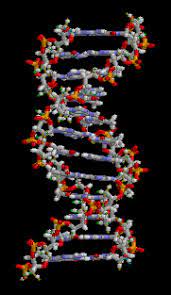
| - | AB | Ab | aB | ab | |
|---|---|---|---|---|---|
| AB | AA | AA | Aa | Aa | |
| BB | Bb | BB | Bb | ||
| Ab | AA | AA | Aa | Aa | |
| Bb | bb | Bb | bb | ||
| aB | Aa | Aa | aa | aa | |
| BB | Bb | BB | Bb | ||
| ab | Aa | Aa | aa | aa | |
| Bb | bb | Bb | bb |
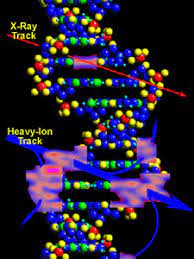 Did you know that for every generation that passes, more and more mistakes are piling up in the human genome? This means your DNA has more mistakes than your parent’s DNA, which has more mistakes than their parents’ DNA, which has more mistakes than their parents, which has—well, you get the point! These mistakes are caused by mutations, which are basically coping errors when DNA is replicated. Now, thankfully for us, most of these mutations have no noticeable effect. But, even if we do not notice them, they are still there, corrupting our DNA.
Did you know that for every generation that passes, more and more mistakes are piling up in the human genome? This means your DNA has more mistakes than your parent’s DNA, which has more mistakes than their parents’ DNA, which has more mistakes than their parents, which has—well, you get the point! These mistakes are caused by mutations, which are basically coping errors when DNA is replicated. Now, thankfully for us, most of these mutations have no noticeable effect. But, even if we do not notice them, they are still there, corrupting our DNA.
A conservative estimate says that 100-300 new mutations occur in human reproductive cells per individual per generation. Some numbers are as high as 1000 new mutations per individual per generation. That is a lot of mistakes! Now, most people think that natural selection will get rid of these mutations. After all, isn’t that its job? Well, it is not quite that easy. You see, natural selection can only select against mutations that have a noticeable and significant effect – in the moment! If the mutation is neutral or even if it’s harmful, but hasn’t caused death or serious harm, natural selection won’t get rid of it because it can’t see it. This leads to what is known as “genetic entropy.”
This means that each generation carries all the mutations of previous generations, plus its own new mutations. And with the high mutation rate, genetic entropy is increasing quickly. In fact, it is increasing so fast there is no way humans have been on the planet for millions of years, like evolution suggests. Our genetic code would be so burdened with mutations, we would be such a mess that we would be extinct!
Our genetic code does not look like it has been mutating for even tens of thousands of years. Instead, it looks like it was incredibly well designed and has only been subject to the degrading influence of mutations for a short time. What does this imply? It certainly fits with the Biblical historical accounts, that God created mankind about 6,000 years ago, with a perfect genome. It was not until after sin entered the world that mutations began to corrupt our DNA, and there has not been enough time since then to completely destroy our genome. (David Rives)
An excellent introduction to the central question of biological origins is the book Of Pandas and People, by Percival Davis and Dean H. Kenyon, Haughton Publishing Co., Dallas, TX 1989. An easy to understand book presenting evidence for creation and refutation of the many of the arguments of the myth of evolution is Creation: Facts of Life by Gary Parker, Master Books, PO Box 26060 Colorado Springs, CO 80936, 1994.
In The Mystery of Life's Origin: Reassessing Current Theories, Charles Thaxton, Walter Bradley and Roger Olsen (Philosophical Library, NY 1984) calculate the energy and entropy levels involved in assembling the complex molecules that comprise the genetic code. From their work it is clear that the complex genetic program each of us inherited was created by a Superior Intelligence at the beginning-it could not possibly have "evolved." The Second Law of Thermodynamics demands that orderly, complex systems break down, fall apart, rot, rust and decay with the passage of time. Outside energy and outside Intelligence were required to bring the genetic code into existence.
The God of the Bible brings:
matter out of nothing,
order out of chaos,
light out of darkness,
and life out of death.
Original References:
1. Charles B. Thaxton, Walter L. Bradley and Roger L. Olsen, in
The Mystery of Life's Origin (Philosophical Library; New
York, 1984) discuss the Second Law
of Thermodynamics as related to living systems. With their
permission the most relevant three chapters are online. See also
Ruminations on Entropy and Related Topics,
by David Cavanaugh.
2. R. L. Wysong's The Creation-Evolution Controversy (Inquiry
Press; 4925 Jefferson Ave.; Midland, Michigan 48640; 1976), and
Michael Pitman, Adam and Evolution (Rider and Company;
London, 1984). These books concern the genetic-coding mechanisms
in living things and the impossibility of self-assembly of such
complex structures by a combination of time plus chance. Because
statistics are so overwhelmingly against the spontaneous self-assembly
of complex organic molecules--let alone living cells--the idea
that life originated in outer space and came here via meteor or
comet (the "panspermia" theory) has gained popularity
in recent years. Of course, the panspermia theory begs the question
as to how life began in outer space where the same laws of physics
prevail. See Fred Hoyle,The Intelligent Universe (Holt,
Rinehart, and Winston; New York, 1980), for this view.
2. The Bible indicates there are various levels of life possessed
by plants, by animals, by men and by angels, ("For not all
flesh is alike, but there is one kind for men, another for animals,
another for birds, and another for fish. There are celestial bodies
and there are terrestrial bodies; but the glory of the celestial
is one, and the glory of the terrestrial is another. There is
one glory of the sun, and another glory of the moon, and another
glory of the stars; for star differs from star in glory."
1 Corinthians 15:39-41). This is fairly obvious to us in everyday
life. Trees and plants are simpler forms of life than birds and
insects. There are very great differences between the highest
animals and man. Man and angels differ in a number of major ways,
etc. Angels for instance are "spirit beings" while the
body of man was made from the dust of the earth, though man is
also a created spirit.
3. James Gleick, Chaos: Making a New Science, (Penguin
Books, New York 1987) is a good introduction to recent discoveries
of hidden order in nature.
Lambert Dolphin's Main Library
Email is welcome: Lambert Dolphin
Archive for Newsletters
Library Annex (900+ new articles since 2018. Free, help thyself)
Audio Library (mp3)
My Search
Interviews

Search this site:
